Asthma

Asthma
Asthma is a disease commonly called as a wheezing problem. It is a chronic inflammatory disorder of the airway characterised by hyper-responsiveness and obstruction of the airway in response to various stimuli. That is, ourRead more...
-
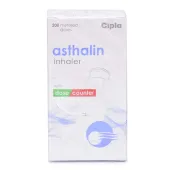
-

-
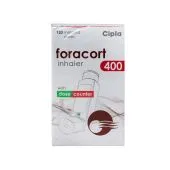
-
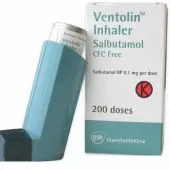
-
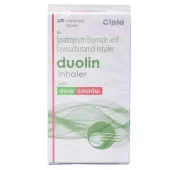 Duolin Inhaler 50 Mcg + 20 Mcg Levosalbutamol (50mcg), Ipratropium (20mcg) 1 Pack/s : $11.04As low as $38.03
Duolin Inhaler 50 Mcg + 20 Mcg Levosalbutamol (50mcg), Ipratropium (20mcg) 1 Pack/s : $11.04As low as $38.03 -

-

-
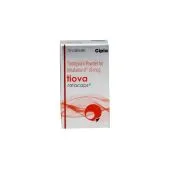
-
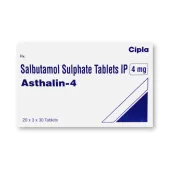
-
 Seroflo Inhaler 25 Mcg + 125 Mcg Salmeterol + Fluticasone Propionate 1 Dose/s : $0.11As low as $14.40
Seroflo Inhaler 25 Mcg + 125 Mcg Salmeterol + Fluticasone Propionate 1 Dose/s : $0.11As low as $14.40 -
 Seroflo Inhaler 25 Mcg + 250 Mcg Salmeterol + Fluticasone Propionate 1 Dose/s : $0.15As low as $20.16
Seroflo Inhaler 25 Mcg + 250 Mcg Salmeterol + Fluticasone Propionate 1 Dose/s : $0.15As low as $20.16 -
 Seretide Accuhaler 250 Mcg Salmeterol & Fluticasone Propionate Accuhaler 1 Dose/s : $0.63As low as $41.25
Seretide Accuhaler 250 Mcg Salmeterol & Fluticasone Propionate Accuhaler 1 Dose/s : $0.63As low as $41.25 -
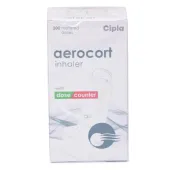 Aerocort Inhaler 50 Mcg + 50 Mcg Beclomethasone Dipropionate & Levosalbutamol Inhaler 1 Bottle/s : $8.33As low as $11.51
Aerocort Inhaler 50 Mcg + 50 Mcg Beclomethasone Dipropionate & Levosalbutamol Inhaler 1 Bottle/s : $8.33As low as $11.51 -
 Aerocort Rotacaps 100 +100 Mcg Beclomethasone Dipropionate + Levosalbutamol / Levalbuterol 1 Capsule/s : $0.22As low as $14.66
Aerocort Rotacaps 100 +100 Mcg Beclomethasone Dipropionate + Levosalbutamol / Levalbuterol 1 Capsule/s : $0.22As low as $14.66 -

-
 Seroflo Rotacaps 50 Mcg + 500 Mcg Salmeterol + Fluticasone Propionate 1 Capsule/s : $0.38As low as $12.48
Seroflo Rotacaps 50 Mcg + 500 Mcg Salmeterol + Fluticasone Propionate 1 Capsule/s : $0.38As low as $12.48 -

Asthma
Asthma is a disease commonly called as a wheezing problem. It is a chronic inflammatory disorder of the airway characterised by hyper-responsiveness and obstruction of the airway in response to various stimuli. That is, our airway tries to wash away a small piece of dust by creating a huge flood in our lungs. And that like any other floods is a disaster to our body.
Causes
A combination of genetic and environmental factors make the airway respond to the following triggers.
The Common Triggers:
-
Airborne particles, such as pollen, dust, spores, pet dander or excreta of cockroach
-
Respiratory infections, such as the common cold
-
Physical activity (exercise-induced asthma)
-
Cold air
-
Air pollutants and irritants, such as smoke
-
Certain medications, including beta-blockers, aspirin, ibuprofen (Advil, Motrin IB, others) and naproxen (Aleve)
-
Strong emotions and stress
-
Sulphites and preservatives in some food items (especially packed stuff)
-
Gastroesophageal reflux disease (GERD), a condition in which stomach acids back up into your throat
-
Even daily household dust like chilli powder in the kitchen or dust from a long standing bookshelf can trigger an episode of asthma
Pathophysiology:
-
Acute and chronic inflammatory response– the immune system immediately deports all its soldiers in the form of cells, enzymes, and fluids. All the mediators reach the site of inflammation.
-
Bronchial smooth muscle contraction- one of the primary immune response is to constrict the bronchial tree to try to avoid further entry of the dust particles. But in case of asthma, it is an exaggerated response to a trivial particle or sometimes nothing at all.
-
Epithelial damage– the inflammatory reaction results in damaging the epithelium of the bronchial tree and the alveolar epithelium. The epithelium is the group of cells lining the walls of these structures.
-
Airway remodeling– these changes happening multiple times results in a long term remodeling of the airway resulting in reduced airway diameter.
Signs and Symptoms:
-
A cough which is worse at night or early morning
-
Wheezing
-
Shortness of breath
-
Chest tightness
-
Nocturnal awakening
-
Symptoms are episodic and seasonal
-
Triggers of asthma as mentioned before aggravate or start the episode of symptoms
-
Another history of Gastroesophageal reflux disease, sinusitis, rhinitis, postnasal drip, aspirin sensitivity, family history of atopy or prior asthma treatment
On examination, the doctor would be able to identify the wheezing and prolonged expiratory phase. Signs of atopy, tachypnoea or accessory muscle use may be appreciated.
Diagnosis of Asthma:
-
Complete Blood Count may reveal Eosinophilia
-
Serum IgE levels may be elevated
-
Allergy skin testing and allergen-specific IgE
-
Chest Radiography
-
Pulmonary Function Tests showing reduced forced expiratory volume and peak expiratory flow rate
Asthma Phenotypes- Latest Update
1. Allergic Asthma- Presents during childhood itself. Patient has other associated symptoms of allergy like eczema, allergic rhinitis, allergy to food items etc. The sputum examination in these patients would show increased number of eosinophils (a type of white blood cell involved in allergic conditions).
2. Nonallergic asthma- These patients will not have any allergic symptoms and their blood picture will not show any allergic parameters.
3. Late onset asthma- This is usually non-allergic in nature and common among adult females.
4. Asthma with fixed airflow limitation- When a long standing asthma patient develops airflow limitation evident by lung function tests due to airway remodeling, it is described under this phenotype.
5. Asthma with obesity- In these patients, there are prominent airway symptoms despite inadequate inflammatory response.
Management of Asthma:
The goals of therapy are
-
to relieve the symptoms
-
to reduce the limitation of physical activity
-
to optimize the lung function
-
to minimize the acute exacerbations and emergency visits
-
to individualize the medicines and reduce the side effects
Stepwise Management Of Asthma:
Depending upon the severity, the patients are graded treatment is started. Then, patients are reassessed after 2-3 weeks and the grade of treatment is either stepped up or stepped down according to the necessity.
Step 1- Intermittent Asthma
-
Only rescue therapy using salbutamol puffs
-
If puffs have to be used for more than twice in the same week, move to step 2
Step 2- Mild Persistent Asthma
-
Low dose inhaled steroid plus long acting beta agonists
Step 3- Moderate Persistent Asthma
-
Moderate dose inhaled steroids plus long acting beta agonists or Moderate dose inhaled steroids plus leukotriene inhibitors
Step 4- Severe Persistent Asthma
-
High dose inhaled steroids plus long acting beta two agonists plus ORAL Steroids.
Common Medications:
-
Beta-agonists- salbutamol, formoterol, bambuterol
-
Bronchodilators- Deri Phyl ENE
-
Inhaled corticosteroids - betamethasone
-
Leukotriene modulators – montelukast, zafirlukast
-
Monoclonal anti-IgE antibody – infliximab, adalimumab
Side Effects of The Drugs:
Beta agonists cause tremors, palpitations, sudden hypokalemia resulting in major cardiac involvements and even death if not monitored. So, report to the doctor in case of such symptoms. Either changing the drug or decreasing dosage is the suggested alternative.
Steroids cause oral or submucosal candidiasis. Maintain good oral hygiene and gargle using salt water daily to prevent local infection. sodium and water retention, steroid induced psychosis, developing diabetes and hypertension, in the long run, are some of the many side effects of steroids.
Complications:
-
During pregnancy, the severity changes and hence medication has to be tailored
-
For occupational asthma, detailed history of occupational exposure has to be obtained
-
Acute exacerbation of asthma is an acute emergency condition
Myths And Facts
-
Myth: Any wheeze is asthma.
-
Fact: all that has wheeze is not asthma. There are a various differential diagnosis to be considered.
-
Myth: Asthma patients almost always die of respiratory distress
-
Fact: Asthma is a very treatable condition and the percentage of deaths is relatively less
-
Myth: Taking metered dose inhalers can cause severe unwanted complications
-
Fact: Metered dose inhalers are a very effective way in the treatment of asthma
-
Myth: Asthma patients should never exercise
-
Fact: Exercise induced asthma is a possibility but exercises are not always contraindicated in asthma
Differential Diagnosis:
-
Upper airway obstruction by tumour, epiglottitis/ vocal cord dysfunction, obstructive sleep apnoea etc.
-
Lower airway diseases like allergic bronchopulmonary aspergillosis, alpha1 antitrypsin deficiency, COPD, bronchiectasis, cystic fibrosis
-
Localized airway obstruction by foreign body
-
Other diseases like cardiac failure, hypersensitivity reactions etc.
Prevention:
-
Identify the triggers and avoid exposure to them
-
Use the regular medications appropriately to avoid exacerbations
-
Patient education





